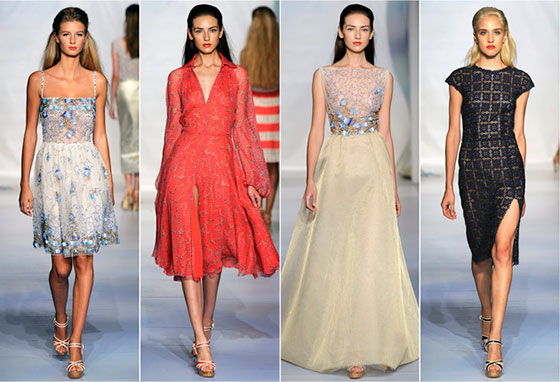The Evolution of Fashion Dresses: From Classic Elegance to Modern Trends

Image Source: Google
When we think of fashion dresses, our minds often conjure up images of elegant gowns from bygone eras, such as the Victorian era or the Roaring Twenties. These classic styles have served as the foundation for the evolution of fashion dresses. Over the years, fashion trends have shifted and transformed, giving rise to a plethora of styles that range from timeless elegance to avant-garde designs.
One of the most iconic fashion eras that continue to influence modern dress styles is the 1950s. This post-World War II era was characterized by full skirts, cinched waists, and feminine silhouettes. The hourglass figure was celebrated, and women's dresses were designed to accentuate their curves. If you need more information about fashion dresses, you may check this website.
As we moved into the swinging sixties, fashion took a drastic turn towards mod styles and mini dresses. Designers such as Mary Quant embraced bold colors, geometric patterns, and liberated silhouettes. The mini dress became a symbol of youth and rebellion, challenging the traditional notion of modesty and femininity. The sixties were a time of experimentation and breaking away from the constraints of the past, leading to a revolution in dress styles that continues to influence contemporary fashion.
The 1970s brought in a bohemian vibe with flowing maxi dresses, peasant blouses, and floral prints. This era was all about embracing nature, freedom, and self-expression. Designers drew inspiration from global cultures, incorporating elements such as fringe, embroidery, and crochet into their designs. The 70s saw a fusion of style influences from around the world, creating a rich tapestry of fashion that celebrated individuality and creativity.
Fast forward to the present day, and we see a mix of vintage inspiration and modern trends shaping the fashion landscape. Classic elegance is still revered, with designers drawing on elements from past eras to create timeless pieces that transcend fleeting trends. The little black dress, the wrap dress, and the sheath dress are all staples in a modern woman's wardrobe, embodying the essence of sophistication and style.
However, modern fashion dresses also embrace a sense of playfulness and daring that sets them apart from their predecessors. Designers are pushing the boundaries of traditional dress styles, experimenting with unconventional fabrics, unexpected cuts, and bold embellishments. The line between fashion and art is becoming increasingly blurred, leading to a redefinition of what constitutes a "dress."
One of the key trends that have emerged in recent years is the fusion of masculine and feminine elements in dress design. Gender-neutral styles, oversized silhouettes, and tailored suits worn as dresses have become increasingly popular, challenging traditional notions of gender and fashion. Designers are exploring new ways to create garments that are both fashion-forward and inclusive, catering to a diverse range of tastes and preferences.
Another trend that is making waves in the fashion world is sustainability. As the industry grapples with its environmental impact, designers are turning to eco-friendly fabrics, ethical production practices, and innovative recycling methods to create dresses that are not only stylish but also sustainable. Upcycled materials, organic cotton, and biodegradable textiles are becoming increasingly common in dress design, reflecting a growing awareness of the need for more responsible fashion choices.
In conclusion, the evolution of fashion dresses has been a journey from classic elegance to modern trends. While timeless styles continue to inspire designers and consumers alike, the fashion landscape is also marked by a spirit of innovation and experimentation. From the iconic looks of the past to the avant-garde designs of the present, fashion dresses continue to reflect the ever-changing tastes and values of society. As we look towards the future, it is clear that the evolution of fashion dresses will be shaped by a commitment to sustainability, inclusivity, and creative expression.